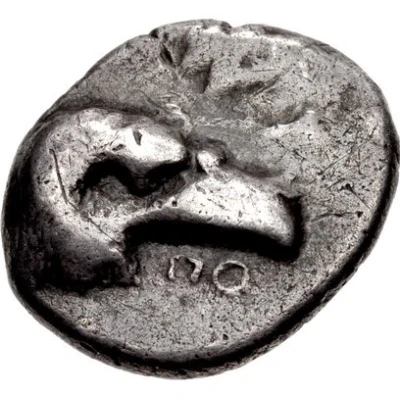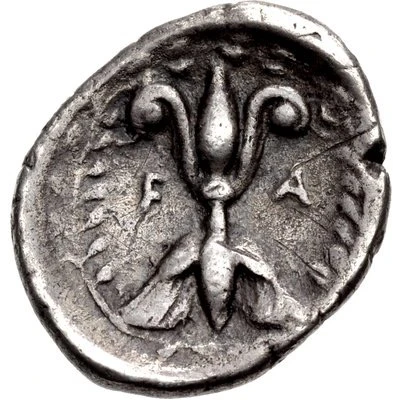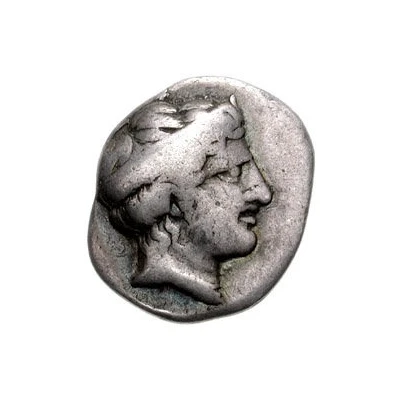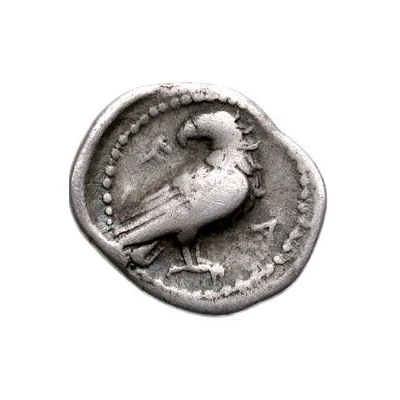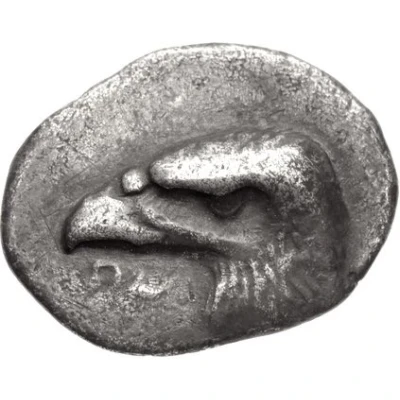
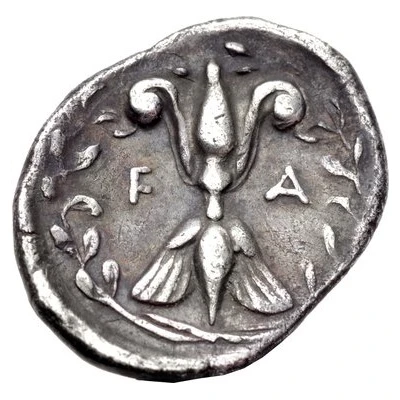

© Classical Numismatic Group, Inc.
Hemidrachm - 97th-100th Olympiad 392 BC - 380 BC
| Silver | 2.85 g | 18.0 mm |
| Issuer | Olympia (Elis) |
|---|---|
| Type | Standard circulation coin |
| Years | 392 BC - 380 BC |
| Value | Hemidrachm (½) |
| Currency | Drachm |
| Composition | Silver |
| Weight | 2.85 g |
| Diameter | 18.0 mm |
| Shape | Round (irregular) |
| Technique | Hammered |
| Demonetized | Yes |
| Updated | 2024-10-10 |
| Numista | N#177986 |
|---|---|
| Rarity index | 100% |
Reverse
Upright thunderbolt with volutes and wings. F-A flanking and all within wreath
Script: Greek
Lettering: F A
Interesting fact
The Hemidrachm coin was used as a form of currency in ancient Greece during the 4th century BC. The coin features the image of a Pegasus, a mythical winged horse, on one side and the profile of a helmeted man on the other. The coin was made of silver and weighed approximately 2.85 grams. The Hemidrachm was an important coin during its time, as it was used to pay for goods and services, and it was also used as a form of payment for athletes who participated in the ancient Olympic Games, which were held in Olympia, Elis. The coin's design and the fact that it was used as a form of payment for Olympic athletes make it a unique and interesting piece of history.
